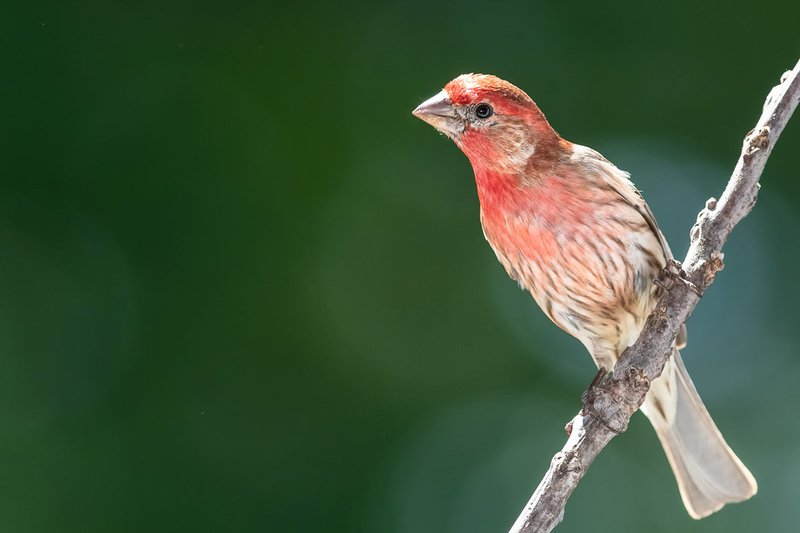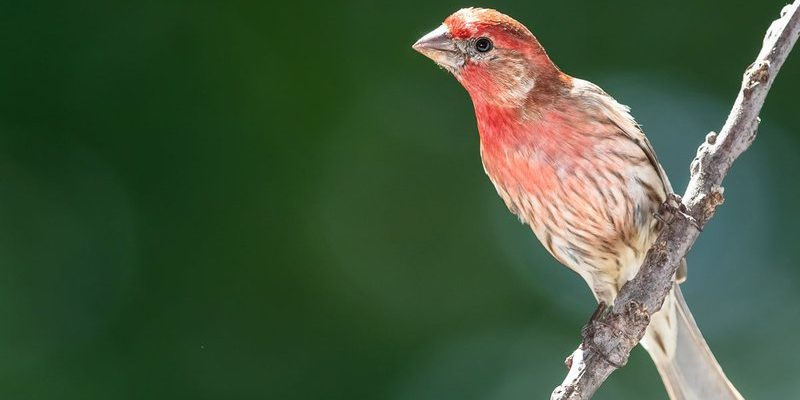
In this article, we’ll dive into ten surprising facts about finches that might just make you appreciate these birds a little more. From their unique songs to their role in ecosystems, finches have stories worth telling. So grab your favorite cup of coffee, and let’s explore the world of finches together!
1. A Diverse Family of Birds
Finches belong to the family Fringillidae, which includes a broad range of species. You might be surprised to learn that there are over 200 different types of finches! These birds can be found all over the world, from the vibrant green countryside of Europe to the bustling urban areas of North America. They vary significantly in size, color, and song.
Some of the most well-known finches include the American Goldfinch, House Finch, and the beautiful Zebra Finch. Each species has its own unique traits. For example, the American Goldfinch is famous for its bright yellow plumage, especially during the summer months. In contrast, the House Finch boasts a more understated look, sporting a brownish color with hints of red on the male’s head and chest.
Let me explain: finches are more than just pretty faces. Their varied appearances and behaviors help them adapt to different environments. This adaptability plays a crucial role in their survival, allowing them to thrive in many habitats.
2. Remarkable Vocalists
Have you ever paused to listen to the enchanting songs of finches? These little birds are known for their melodious calls and diverse vocalizations. From the cheerful chirps of the House Finch to the distinctive, complex songs of the Song Sparrow, finches showcase an impressive range of sounds.
They use their songs for various reasons, including attracting mates and defending their territories. Male finches often sing to impress potential partners, showcasing their vitality and fitness. You might be wondering why this is important. Well, in the bird world, a strong song can make a big difference during mating season.
Interestingly, some finches are known to mimic the sounds of other birds. This skill can help them blend into their surroundings or establish a territory more effectively. It’s almost like they’re putting on a performance to ensure their survival!
3. Finches and Their Diets
Finches are primarily seed-eaters, which is why you’ll often spot them pecking around on the ground or at feeders. Their strong, cone-shaped beaks are perfectly designed for cracking open seeds. But here’s the thing: they don’t just eat seeds! Finches also enjoy fruits, insects, and even flower nectar.
This varied diet allows them to thrive in different environments. For example, the European Goldfinch is known to love thistle seeds, while the Pine Siskin prefers spruce tree seeds. Some finches even have specialized feeding habits, like foraging in trees or shrubs, making them adaptable to their surroundings.
Providing food sources like bird feeders in your backyard can attract these delightful creatures. They not only help with seed dispersal but also contribute to a balanced ecosystem. So, if you’re a bird lover, setting up a feeder could bring joy and a sprinkle of life to your outdoor space.
4. Nesting Habits: Builders of Beauty
Finches are also skilled architects! When it comes to nesting, these birds can be quite creative. They often build their nests in shrubs or trees, using twigs, grasses, and even feathers to create a cozy home for their eggs.
Here’s an interesting fact: some female finches are responsible for nest building, while the males may help by bringing materials. Their nests can vary in structure based on species, with some being quite elaborate. The American Goldfinch, for example, tends to weave its nest tightly, making it sturdy enough to withstand wind and rain.
Once the eggs are laid, both parents often share the responsibility of feeding the chicks, teaching them how to find food, and preparing them for their first flights. This teamwork is vital for the survival of their young, helping them grow into independent birds.
5. A Role in the Ecosystem
Finches play a significant role in their ecosystems. As seed-eaters, they help control plant populations by eating seeds, preventing certain plants from overtaking areas. When they drop seeds in different locations, they also contribute to plant propagation, allowing new plants to grow.
Their feeding habits don’t just benefit them; they benefit other wildlife, too. Finches attract predators, such as hawks and falcons, which rely on them as a food source. This helps maintain a balanced ecosystem where various species can thrive together.
You might be surprised to learn that finches are also indicators of environmental health. If finch populations begin to decline, it may signal larger issues in their habitats, such as habitat loss or pollution. By observing finches, researchers can gain insights into the overall state of an ecosystem.
6. The Importance of Coloration
Finches come in all colors, but their plumage isn’t just for show. In many species, vibrant colors indicate health and vitality, particularly in males. Bright colors can be attractive to females during mating season and signal a strong genetic background.
Some species can change their colors based on the season or their diet. For instance, male American Goldfinches are bright yellow during the breeding season and become a more muted olive color in the winter. This change helps them blend in with their surroundings, keeping them safe from predators.
It’s fascinating to think about how these color adaptations play a role in their life cycle. What may seem like a simple wardrobe change is actually a strategy for survival!
7. Social Creatures
Finches are often seen in flocks, especially outside the breeding season. These social behaviors help them find food, protect themselves from predators, and learn from each other. When you see a bunch of finches flitting about together, they’re not just having fun—they’re enhancing their chances of survival.
Within their flocks, finches engage in various social interactions, such as grooming each other or calling to maintain contact. This social structure strengthens their bonds and can make them feel more secure. You might even notice that they seem to have favorite perching spots, where they gather to chat and keep watch.
Observing these behaviors can be a real treat for bird enthusiasts. It’s like watching a little community thrive, working together to navigate the challenges of their environment.
8. Adaptations to Changing Environments
Finches are incredibly adaptable birds. Over time, they’ve developed various strategies to cope with changes in their habitats. For instance, some finches have migrated or adjusted their diets in response to climate change and urbanization.
Take the Galápagos Finch, for example. This remarkable bird has adapted to different food sources depending on the availability of seeds and insects on the islands. This flexibility has helped them thrive in a variety of conditions.
You might be wondering how this relates to the finches in your backyard. By providing a reliable food source, like a bird feeder filled with seeds, you can help local finches adapt to changing environments. It’s a simple way to support these charming birds while enjoying their presence.
9. Their Impact on Science and Culture
Finches have played a vital role in the study of evolution and natural selection. Charles Darwin famously studied finches in the Galápagos Islands, leading to significant insights about adaptive radiation. His observations of different finch species and their beak shapes helped shape the theory of evolution.
In culture, finches symbolize happiness and joy in various contexts. Their cheerful songs and vibrant colors have inspired art, literature, and music throughout history. You might notice that they often appear in poems and songs, celebrated for their lively spirit and beauty.
So, the next time you hear a finch singing, remember that they’re not just charming birds—they’re also part of something much bigger.
10. Caring for Finches at Home
If you’re considering attracting finches to your home, there are a few essential things to keep in mind. Start by creating a welcoming space with designated areas for feeding and bathing. Using an appropriate bird feeder filled with seeds like thistle or sunflower can draw in a variety of finches.
Additionally, providing native plants in your garden is beneficial. These plants offer natural food sources and shelter for finches, making your yard a more attractive spot for them. It’s great for the birds and helps support local biodiversity.
Remember to keep the feeder clean and refill it regularly. This simple act can make a significant difference in the lives of your feathered friends. By doing so, you’ll enjoy the beauty of finches while contributing to their well-being.
In conclusion, finches are more than just delightful backyard visitors. They’re fascinating, adaptable, and play critical roles in their ecosystems. Whether you admire their colorful plumage or enjoy their songs, there’s no denying the charm of finches. By understanding and supporting these little birds, we can appreciate their beauty and ensure they thrive in our world. So, the next time you see a finch, take a moment to enjoy their presence—you never know what stories they might tell!

